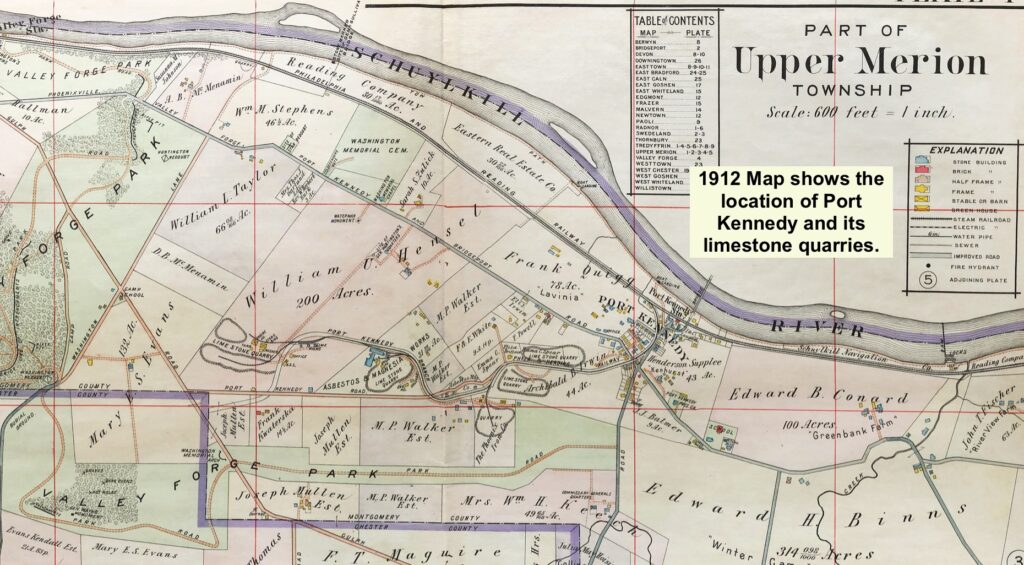By Ed Dybicz 6 SEP 1967
In recent years, Upper Merion Township has been the scene of a problem commonly referred to as sink holes. These depressions in the earth have occurred from time to time in various parts of the sprawling township, the latest about three weeks ago on the DeKalb Pike near Henderson Rd.
Of the many theories advanced concerning sink holes, is one belief that an underground stream may be a possible cause. This column has received an inquiry from a reader who recalled that “bones were once found in a sink hole”.
No doubt, reference is made to the discovery of a fissure in a Port Kennedy quarry in 1894, which did contain bones believed to be 30,000 years old.
Springs, caverns, sink holes, and fissures, usually abound in limestone and associated areas of marble and iron ore content.
In Upper Merion Township, which is dotted with quarries, there is that type belt of limestone, marble and iron ore which stretches from Port Kennedy – Valley Forge, through King of Prussia, into King Manor – Hughes Park, Swedesburg and Swedeland, and crosses the Schuylkill into Plymouth Township.
1894 Fissure
In 1894 when A. B. Irwin owned the Port Kennedy quarries, a fissure was discovered which proved to be filled with clay and refuse. Soon animal bones came to light. When the news was printed, it brought scientists from the University of Pennsylvania and the Philadelphia Academy of Natural Sciences to the scene, and arrangements were made for a careful examination of the contents of the cavern.
The systematic research, continued for months, was in charge of Dr. Henry C. Mercer, then curator of American archaeology at the University of Pennsylvania.
As most of the bones were brittle, excavations had to be pursued with much care. When a bone was uncovered it was encased in plaster of paris to preserve it. No large skulls or fragments were revealed.
However, bones and teeth of numerous animals, then unknown to scientists were found. Most of the bones were either from extinct animals for from animals now living in warmer climates, such as the cloth tapir and tiger.
There were also bones of the bear and mastodon.
Investigators concluded that the remains were of the age immediately preceding that of man, about 30,000 years ago, according to records of the Historical Society of Montgomery County.
Dr. Mercer was keenly on the lookout for any traces of man’s activity, but not even so much as a piece of burned wood was found.
No evidence of man in that era had been revealed anywhere in America. A small stream of water ran through the Port Kennedy cavern, and it was Dr. Mercer’s belief that in some great cataclysm many animals had been destroyed and their remaines washed into the cave.

